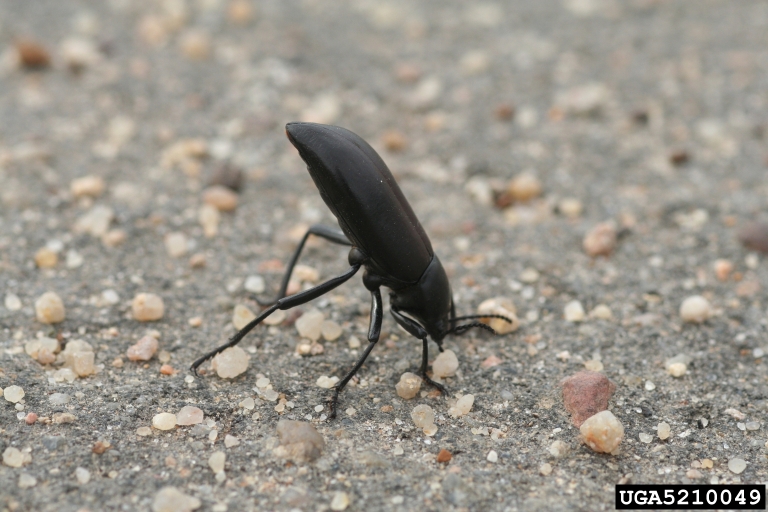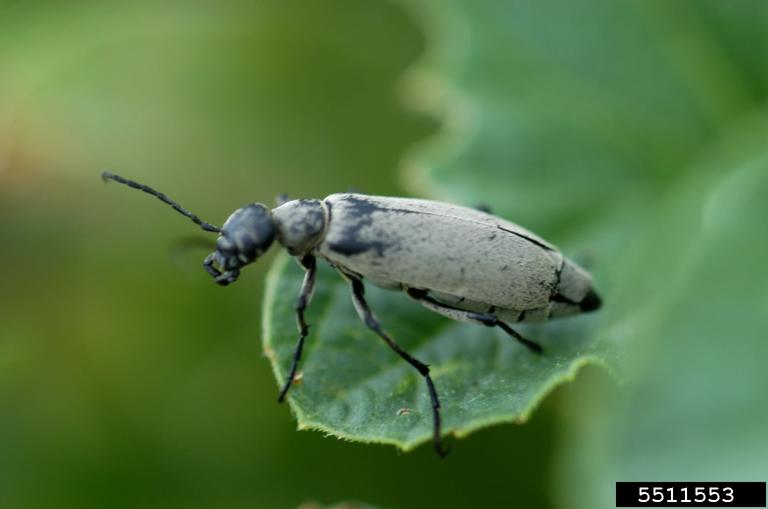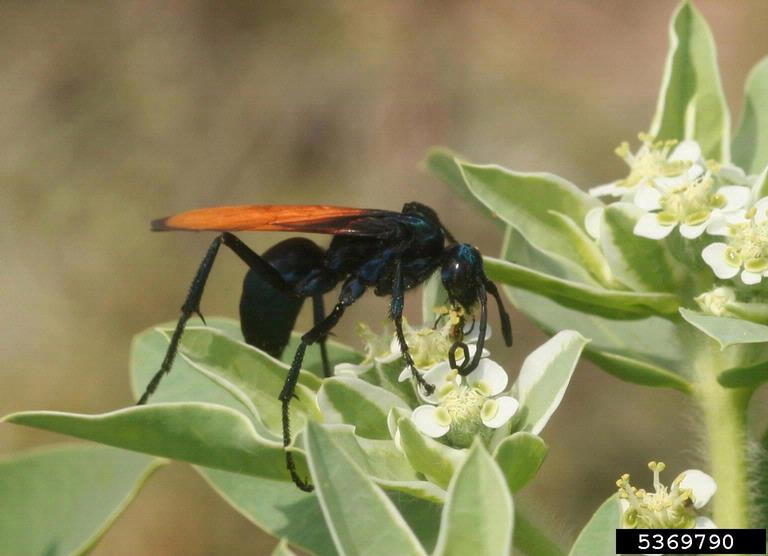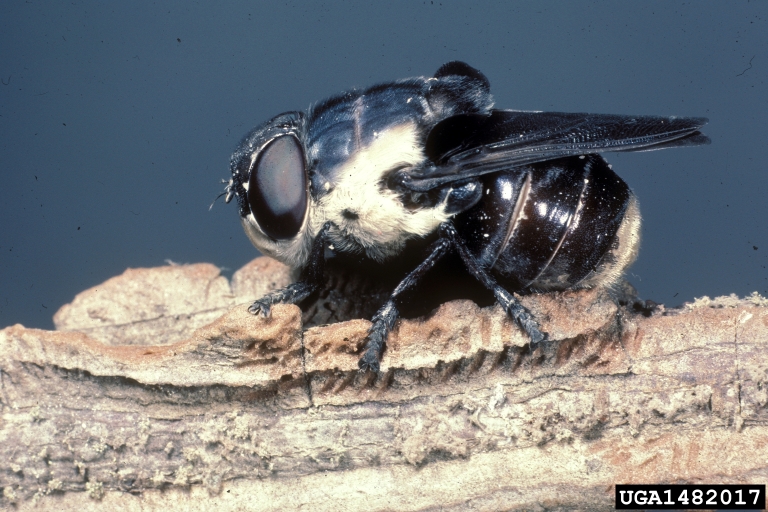 Arizona's Interseting Insects - April 30, 2014 Jeff Schalau, Agent, Agriculture & Natural Resources University of Arizona Cooperative Extension, Yavapai County Insects rule in Arizona! New residents and visitors are often surprised by the diversity of insects we have in our state. The University of Arizona’s insect collection contains approximately two million specimens representing an estimated 35,000 species. Of these, 83% are identified to species level. Many new species are discovered and described every year. I certainly appreciate the diversity of insects we have. In my work with citizens and communities in Yavapai County, the University of Arizona Cooperative Extension is often asked to help identify and suggest management strategies for insects that damage plants and structures. Here are five of Arizona’s insects that have unique appearances and interesting behaviors. The Pinacate beetle (Eleodes spp.) is Arizona’s official welcoming committee. These largish beetles (up to 1.5 inches) are black and have a pointed rear end. They greet you by standing on their heads, but this is actually a defense strategy. If further perturbed, they will secrete a noxious spray of repellent chemicals from their hind end causing most animals and birds to beat a hasty retreat. Ecologically, Pinacate beetles are beneficial recyclers. Their larvae are similar to meal worms and feed on organic matter in the soil. These insects are not pests but should be enjoyed from a short distance. Blister beetles (Family Meloidae) have 7,500 species worldwide. Several of these can be found in Arizona. Most vegetable and flower gardeners are familiar with them because several species are plant feeders. Adult blister beetles often congregate in large numbers to feed in the summer months. When this occurs, they can defoliate entire trees and destroy crops such as tomatoes, peppers. They are called blister beetles because some species excrete cantharadin: a highly toxic chemical that causes blistering upon contact with skin and mucus membranes (and is used medicinally to remove warts). Some blister beetle larvae are also reported to consume grasshopper eggs. Velvet ants (Family Mutilldae) are actually wingless wasps covered with distinctively colored erect hairs. They are much more substantial than ants and between ½ to 1 inch long. The hair colors can be black, orange, red, silver, and white. These bright colors serve as “aposematic” signals to other organisms warning them to “stay away or suffer the consequences”. They can and will deliver a very painful sting. Tarantula hawks (Pepsis chrysothemis) is probably the largest wasp you will ever see. Their bodies are over 2 inches long and metallic blue black. The wings are either blue black or orange. They are the largest members of the wasp family Pompilidae which utilize spiders for their food source. After mating, the female adult uses its sense of smell to search for a tarantula. When she finds the spider, she delivers a paralyzing sting and drags the paralyzed prey to the nest hole she has dug. She places the tarantula in the hole and lays a single egg on it and buries that nest. The still-living, paralyzed tarantula is slowly consumed by the developing larva. The wasp then pupates and emerges as an adult tarantula hawk. Rodent bot flies (Cuterebra spp.) are parasites that use warm-blooded animal hosts to feed their larvae. I have encountered rodent bot flies here in Yavapai County on a few occasions. The first time, a hunter called after he had shot a rabbit. When he retrieved it, he saw two large maggots exiting the rabbit’s neck area. He collected the grubs and brought them to the Prescott Cooperative Extension office for identification. By the time he arrived at the office, the maggots had begun to pupate (the resting stage before they emerge as adults). Here, rodent bot flies use woodrats, cottontail rabbits, jackrabbits, and ground squirrels as hosts. Fertilized female bot flies lay eggs near rodent nest and burrow entrances. These eggs hatch instantaneously when near a warm blooded animal. After hatching, they burrow under the host’s skin and make their living before exiting the host. Only in rare cases have rodent bot flies been found in human hosts. However, there are other species in South and Central America that…oh never mind, I’ll stop there. You may find the last two examples somewhat disturbing. Insects are fascinating organisms, but they can also be harmful and sometimes deadly depending on your species. Do you remember the movie “Invasion of the Body Snatchers”? Great science fiction is often rooted in real life. Below are photos of the insects described above. Follow the Backyard Gardener on Twitter – use the link on the BYG website. If you have other gardening questions, call the Master Gardener help line in the Camp Verde office at 928-554-8999 Ext. 3 or e-mail us at verdevalleymg@gmail.com and be sure to include your name, address and phone number. Find past Backyard Gardener columns or provide feedback at the Backyard Gardener web site: http://cals.arizona.edu/yavapai/anr/hort/byg/.  Pinacate beetle (Whitney Cranshaw, Colorado State University, Bugwood.org)
Pinacate beetle (Whitney Cranshaw, Colorado State University, Bugwood.org) Ashgray blister beetle (Ward Upham, Kansas State University, Bugwood.org)
Ashgray blister beetle (Ward Upham, Kansas State University, Bugwood.org) Yellow velvet ant (Copyright © 2011 Lon Brehmer and Enriqueta Flores-Guevara, Bugguide.net)
Yellow velvet ant (Copyright © 2011 Lon Brehmer and Enriqueta Flores-Guevara, Bugguide.net) Tarantula hawk (Whitney Cranshaw, Colorado State University, Bugwood.org)
Tarantula hawk (Whitney Cranshaw, Colorado State University, Bugwood.org) Rodent bot fly (Sturgis McKeever, Georgia Southern University, Bugwood.org)
Rodent bot fly (Sturgis McKeever, Georgia Southern University, Bugwood.org) |